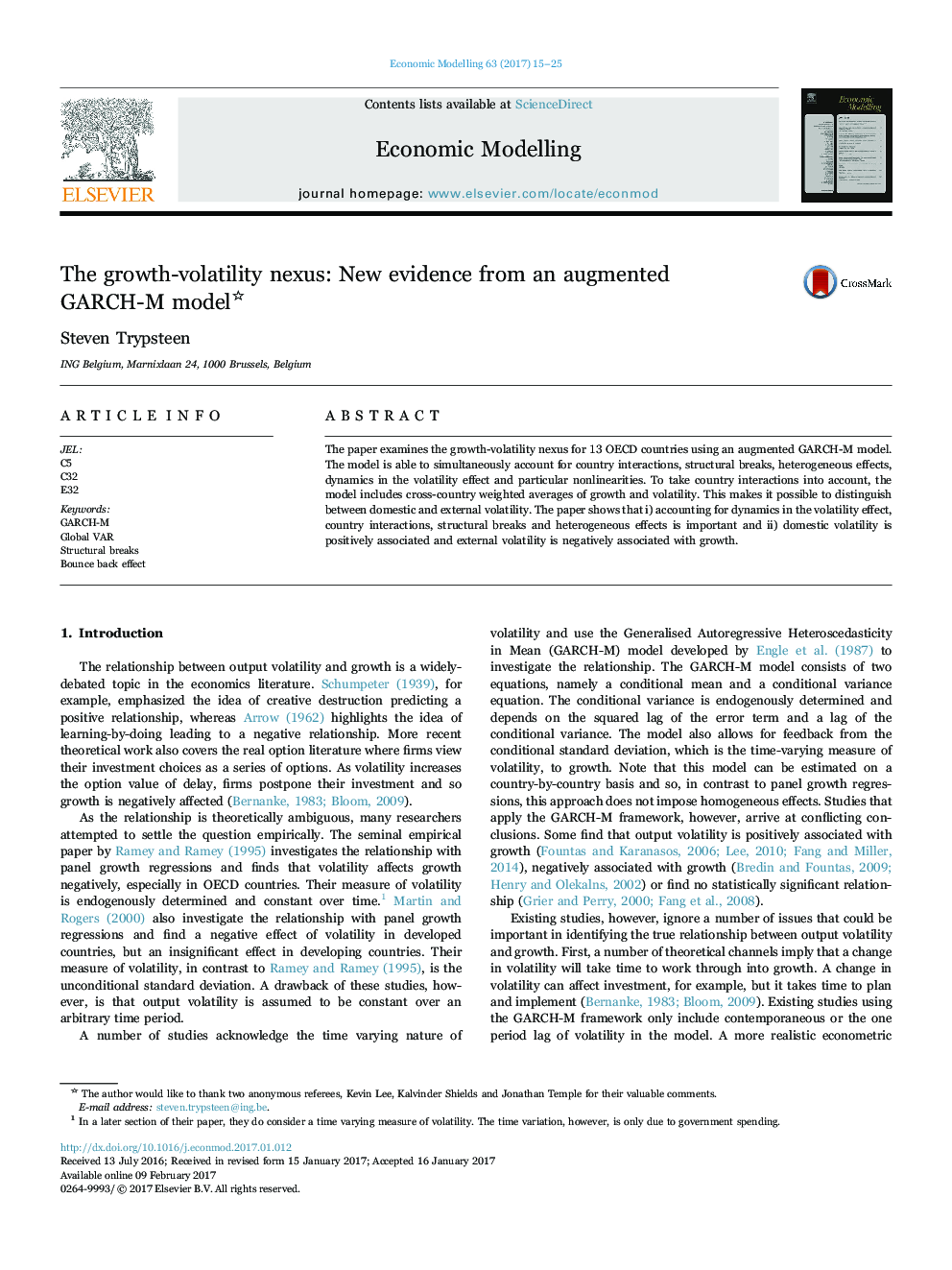| کد مقاله | کد نشریه | سال انتشار | مقاله انگلیسی | نسخه تمام متن |
|---|---|---|---|---|
| 5053225 | 1476506 | 2017 | 11 صفحه PDF | دانلود رایگان |

- The paper examines the growth-volatility nexus with an augmented GARCH-M model.
- The framework accounts for important issues that could affect the empirical relationship.
- The model is also able to distinguish between domestic and external volatility.
- The results show that domestic volatility is positively correlated with growth.
- And that external volatility is negatively correlated with growth.
The paper examines the growth-volatility nexus for 13 OECD countries using an augmented GARCH-M model. The model is able to simultaneously account for country interactions, structural breaks, heterogeneous effects, dynamics in the volatility effect and particular nonlinearities. To take country interactions into account, the model includes cross-country weighted averages of growth and volatility. This makes it possible to distinguish between domestic and external volatility. The paper shows that i) accounting for dynamics in the volatility effect, country interactions, structural breaks and heterogeneous effects is important and ii) domestic volatility is positively associated and external volatility is negatively associated with growth.
Journal: Economic Modelling - Volume 63, June 2017, Pages 15-25